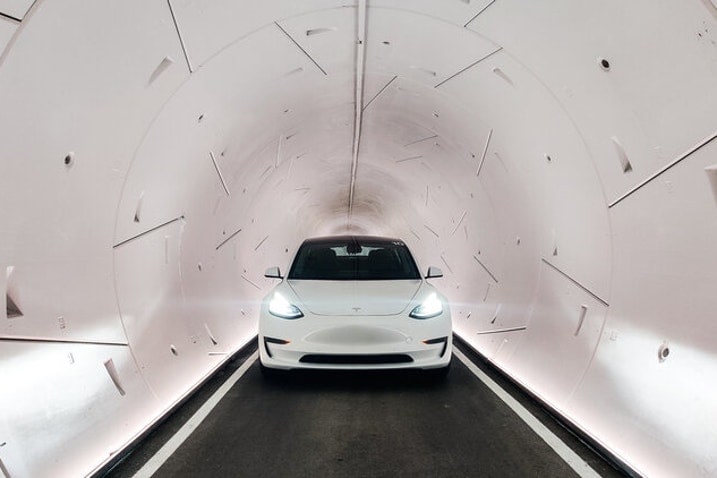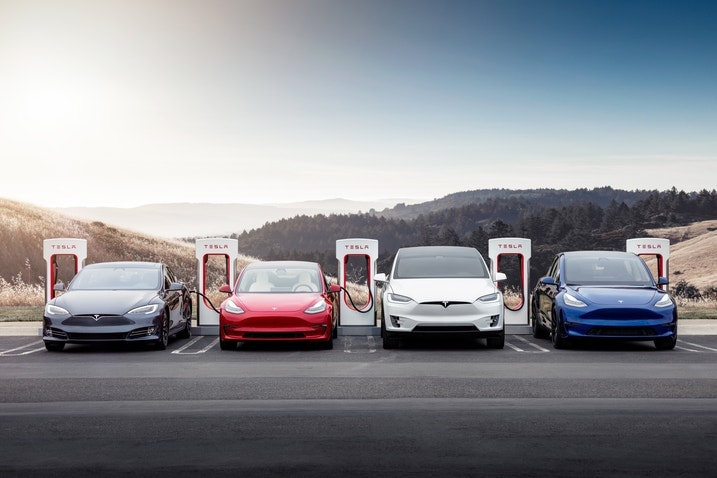- Tesla has reportedly canceled its $25,000 car project, sometimes referred to as the Model 2.
- Instead, Tesla will reportedly shift its focus to building autonomous robotaxis.
- What's really going on? No one outside of Tesla knows.
Does Tesla's Future Include a $25K Car, Robotaxi or Both?
CEO Elon Musk's ever-changing whims create non-concrete future product plans
A report from Reuters alleges that Tesla has canceled its cheap car project, often referred to as its $25,000 car, or the Model 2. Instead, the report says Tesla will focus on autonomous taxis using the same platform. Tesla representatives, including CEO Elon Musk, have refuted the claim about the Model 2's cancellation but have confirmed a robotaxi is coming.
Three sources spoke with Reuters claiming the entry-level Tesla was dead, though Musk had promised as recently as January that the model would start production in Texas by the back half of 2025. Two of the Reuters sources say they learned the Model 2 would be scrapped in a meeting attended by “scores of employees," and one confirmed the meeting took place in February. According to the source, “Elon’s directive is to go all in on robotaxi.” Cancellation of the project was also allegedly related to suppliers when Tesla sent messages saying that they “should halt all further activities related to H422/NV91 [Tesla’s internal names for the Model 2].”
After the Reuters story was published, Musk and Tesla’s chief designer, Franz von Holzhausen, quickly cast doubt on the claims made by the report. Musk did so via X (formerly Twitter) telling followers that “Reuters is dying” in response to a tweet by an X user and then posting, “Tesla Robotaxi unveil on 8/8.” Meanwhile, von Holzhausen spoke at an event in Los Angeles, addressing the report by telling attendees, "I would just say stay tuned. Don't always believe what you read."
So which is it? The $25,000 car or the robotaxi? Musk has made it clear he wants a “robotaxi” and has for years. He sees a future where a fully autonomous vehicle revolutionizes Tesla and its customers. While it’s not outrageous for a company as large (and heavily valued by the market) as Tesla to strive to do both, Tesla and Musk change the story surrounding both products on a whim.
Musk wants a robotaxi to reinvent Tesla
Some of Musk's claims are repeats of points that he's made before. The CEO has previously said that his idea for autonomous taxis will raise the value of Tesla models — even going so far as to say the company can and will begin to charge more for its cars once the service is live. Musk painted his vision for the service at the Tesla Autonomy Investor Day in April 2019. On stage, Musk outlined what he expected his robotaxi would look like in just one year, saying there would be a million autonomous Teslas on the road by then. Via an app, owners would deploy their vehicles for Uber-like trips while they would otherwise not be in use.
Already, Tesla was aware of regulatory issues. At the time, Musk said the owner-taxis won’t be “in all jurisdictions, because we won’t have regulatory approval everywhere, but I am confident we will have at least regulatory approval somewhere, literally next year.” Even as Musk showed flashy slides claiming owner-taxis could make owners up to $30,000 a year while they sat at home or at work, he hedged his bets: “Sometimes I am not on time, but I get it done.”
Since then, “literally” next year has come and gone. Musk was not on time, and instead, the following five years were full of ups and downs for the automaker. It released the long-awaited and much-hyped Cybertruck, showing that while Tesla is not on time, it did “get it done.” But massive price cuts, falling resale values and swelling inventory have dogged the company as other automakers eat away at the lead the company once held in the EV space.
Can a robotaxi reinvent Tesla, and do people even want one?
In the years before and since Musk’s 2019 presentation, others have created whole fleets of driverless taxis and are facing hurdles Tesla has yet to experience. Companies like GM-backed Cruise, Google-backed Waymo and Ford/VW-backed Argo AI have seen wide-ranging issues including hardware and software bugs, reluctance from local lawmakers and currently limited geographic deployment. Argo AI folded after facing some of these problems. This year, just outside San Jose, California, the San Mateo County government opposed the integration of Waymo vehicles into city traffic. It says, “Waymo failed to communicate in any depth or detail with county staff about the specifics of Waymo’s proposal to expand its operations, largely unfettered, into San Mateo County.”
Waymo vehicles have also been the cause of numerous collisions, and in November, autonomous taxi company Cruise CEO Kyle Vogt resigned after the company withheld information regarding a crash that saw a pedestrian dragged down the street. The company also suspended operations for a time, though it has recently said it will soon begin resuming operations in Phoenix. In San Francisco, residents discovered traffic cones confounded the sensors on Cruise taxis and began putting them on cars in protest. Some were burned in acts of vandalism.
It's this environment, riddled with challenges both on the regulatory and demand sides, that Tesla wants to enter. Yet the automaker faces significant challenges of its own. Tesla will likely use its Full-Self Driving software, or a version of it, to pilot the driverless taxis. But Tesla has struggled with the system, which currently does not allow hands-free driving and requires the driver to pay attention to the road at all times. Tesla's Full-Self Driving, FSD Beta and Autopilot systems are being investigated by the National Highway Traffic Safety Administration, and Autopilot has been involved in 736 crashes between 2019 and June 2023, according to the Washington Post.
Tesla's cheap car project is still in doubt — for now
On the other hand, the future of Tesla’s affordable entry-level EV is subject to rapidly changing circumstances, sometimes of its CEO’s own making. Edmunds reported in 2022 that during the company’s 2021 earnings call, Musk told investors, "We are not currently working on the $25,000 car." But last December, he told a very different story during an interview. Musk claimed work was well underway on a “low-cost electric vehicle that will be made at very high volume.” He continued, “The revolution in manufacturing that will be represented by that car will blow people’s minds. It’s not like any car production line that anyone’s ever seen.” Musk also claimed he “review[ed] the production line plans for that every week.”
Regardless of Musk's flip-flopping on the matter, today's EV market looks very different from when Tesla began hinting at the Model 2. GM recently announced it would produce a next-generation version of its affordable long-range Bolt EV, and Ford says its upcoming $25,000 Escape-sized EV platform will underpin multiple models.
This is to say nothing of consumer demand for electric vehicles on the whole. Our own survey shows a disconnect between what consumers want from a new electric vehicle — if shoppers want them at all. Edmunds analysts predict that electric vehicle market share will slow through 2024, rising to around 8% of total new market share. Meanwhile, consumers say they feel a disconnect between crucial EV purchase factors like price, brand trust, vehicle body type, and driving range and what is currently available. If Tesla is still planning a vehicle with a lower point of entry, as Musk and others at the helm say it is, the time is now.
Tesla has hard choices ahead
If Tesla really is shirking a cheap car in favor of autonomous taxis of any kind, the path ahead is difficult at best. Existing autonomous vehicle companies have struggled with everything from government regulations to consumer trust and demand, to software issues and collisions. Tesla already faces many of these same issues with its Full-Self Driving and Autopilot driver assistance software.
On the other hand, it also faces stiff competition from automakers that have begun to produce their own affordable EVs. Chinese brands like BYD and legacy automakers like Ford and GM have or will have solutions for consumers looking to spend less on electrification. All the while, Tesla has fallen behind, making contradictory statements about the future of a viable product spread out across the last several years.
What is constant is Musk’s use of his reach to push causes he deems worthy. If a robotaxi really is around the corner, or if a $25,000 Tesla is right behind it, all of this seems directly tied to the whims of the individual at the helm.
Edmunds says
Tesla’s erratic product planning has cost it market share. Other brands have since filled the space where Tesla wants to put autonomous products and its affordable cars. The company’s lead is being eaten up, and while Tesla has delivered on some successes recently, the automaker needs to pick a path and stick to it or risk falling further behind.





 by
by